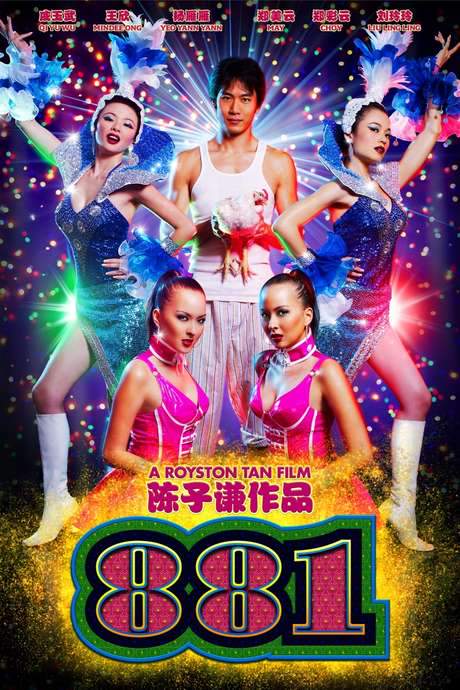
Two Stage Sisters
Year: 1964
Runtime: 112 mins
Language: Chinese
Director: Xie Jin
Set in pre‑revolutionary China, two gifted girls, Chunhua and Yuehong Xing, ascend the ranks of Chinese opera. After being sold to a Shanghai troupe, the looming revolution splits their paths: Yuehong embraces radical, politically progressive performances, while Chunhua escapes the turmoil. Amid the upheaval, they struggle to preserve their friendship.
Warning: spoilers below!
Haven’t seen Two Stage Sisters yet? This summary contains major spoilers. Bookmark the page, watch the movie, and come back for the full breakdown. If you're ready, scroll on and relive the story!
Two Stage Sisters (1964) – Full Plot Summary & Ending Explained
Read the complete plot breakdown of Two Stage Sisters (1964), including all key story events, major twists, and the ending explained in detail. Discover what really happened—and what it all means.
In 1935, a runaway tongyangxi, Zhu Chunhua, Xie Fang finds refuge with an itinerant Yue Opera troupe, the Yangchun Theatre Troupe, as it travels through a Shaoxing village. The troupe’s head, A’Xin, Mao Lu, initially intends to send the girl away, but the Yue Opera teacher Xing, Qi Feng, sees her potential and takes Chunhua in as a dedicated disciple. Chunhua’s adoption by Xing underscores the limited agency women faced in pre-revolutionary China, where performance troupes offered one of the few avenues to escape entrenched patriarchal norms. Chunhua signs a deal with the troupe and becomes the performing partner (in a dan role) to the teacher’s daughter Yuehong, who performs as a xiaosheng. Yuehong, Cao Yindi, is introduced as Chunhua’s sworn sister and collaborator, a pairing that embodies a fragile bond forged in shared struggle.
Together, Chunhua and Yuehong present a united front against oppression within a society that often instrumentalized female artists. The duo’s ascent does not go unnoticed; they’re arrested by Kuomintang police after they rebuff the advances of a wealthy landlord, revealing the state’s complicity with feudal elites. The landlord, Ni, invites Chunhua and Yuehong to sing privately at his house, and his interest in Yuehong is promptly rejected by both Yuehong and her father. In a brutal display of power, Kuomintang cops seize Yuehong during a performance, and Chunhua is also detained and tied to a pillar for days of public humiliation. The sisters’ resilience is tested again when Xing and A’Xin manage to secure their release through bribes, a bitter reminder of the corruption threaded through the regime.
As the Second Sino-Japanese War intensifies, the troupe endures escalating hardship that mirrors the nation’s turmoil. In 1941, Xing dies of illness, and A’Xin sells his two best performers to Tang, a Shanghai opera theater manager, on a three-year contract—an emblematic moment that Cui reads as the commodification of female artistry under capitalism. Chunhua and Yuehong, now established stars in the city, stand at a crossroads: Chunhua remains practical and grounded, while Yuehong leans increasingly toward material success. Yuehong’s ambition drives her to accept Tang’s proposal to marry, but Chunhua distrusts Tang and refuses to back Yuehong’s plans. Behind the scenes, Tang keeps a wife as a mistress, a detail that foreshadows the moral collapse of certain feudal and capitalist temptations. The turning point comes when Chunhua witnesses Shang Shuihua, Tang’s former lover, commit suicide, an event that catalyzes Chunhua’s politicization and marks the “collapse of the old order” in the eyes of the film’s interpretive framework.
Motivated by this tragedy, Chunhua partners with Jiang Bo, a communist journalist and investigator of the death, Gao Fang. Jiang Bo urges Chunhua to embrace a “progressive” path, guiding her to reimagine the troupe’s repertoire to educate audiences about truth and social justice. Chunhua begins staging works that carry political weight, including a bold adaptation of Lu Xun’s The New Year Sacrifice, and the troupe’s productions are soon banned by the authorities. The newly politicized art becomes a target of repression, as Tang mobilizes to ruin Chunhua’s reputation and maintains his hold over Yuehong through coercion and manipulation. A’Xin is drawn into a lawsuit that attempts to curb Chunhua’s influence, while Yuehong is coerced into testifying against her sister, only to faint at a critical moment in court, underscoring the fractures within their alliance.
The film’s timeline moves toward a watershed moment: the founding of the People’s Republic of China. By 1950, Chunhua prepares to perform The White-Haired Girl for rural audiences in Zhejiang, a decision that aligns her art with the state’s new revolutionary propaganda. Tang has fled to Taiwan with the Kuomintang cohort, and Yuehong is left in Shaoxing, overwhelmed by shame and renouncing her former life. Yet, the sisters’ relationship endures in memory, and they share a tearful reunion near a quay, a moment that crystallizes the film’s central tension between personal ambition and collective ideological duty. Yuehong, chastened by the experience, vows to walk the “correct” path, while Chunhua commits her life to revolutionary operas, embracing a role that transcends individual success. Their decision to continue performing The White-Haired Girl becomes a symbol of art’s responsibility to serve the revolution.
Throughout its narrative arc, the film situates personal choices within the broader currents of Chinese history, from patriarchy and economic exploitation to war, regime suppression, and the rise of socialist ideals. It presents a complex tableau of women navigating talent, desire, and political awakening, where friendships are tested, loyalties shift, and art becomes a field of struggle as much as it is a vehicle for self-expression. The work juxtaposes Chunhua’s unwavering revolutionary zeal with Yuehong’s initial attraction to status and security, ultimately arguing for a collectivist, state-aligned vision of cultural production. The final image—two sisters bound by blood and history, choosing distinct but interwoven paths—frames the film’s assertion that art must align with social transformation, even as it preserves the personal histories that shaped those transformative choices.
Last Updated: October 09, 2025 at 09:33
Unlock the Full Story of Two Stage Sisters
Don't stop at just watching — explore Two Stage Sisters in full detail. From the complete plot summary and scene-by-scene timeline to character breakdowns, thematic analysis, and a deep dive into the ending — every page helps you truly understand what Two Stage Sisters is all about. Plus, discover what's next after the movie.
Two Stage Sisters Timeline
Track the full timeline of Two Stage Sisters with every major event arranged chronologically. Perfect for decoding non-linear storytelling, flashbacks, or parallel narratives with a clear scene-by-scene breakdown.

Similar Movies to Two Stage Sisters
Discover movies like Two Stage Sisters that share similar genres, themes, and storytelling elements. Whether you’re drawn to the atmosphere, character arcs, or plot structure, these curated recommendations will help you explore more films you’ll love.
Explore More About Movie Two Stage Sisters
Two Stage Sisters (1964) Scene-by-Scene Movie Timeline
Two Stage Sisters (1964) Movie Characters, Themes & Settings
Two Stage Sisters (1964) Spoiler-Free Summary & Key Flow
Movies Like Two Stage Sisters – Similar Titles You’ll Enjoy
Pavilion of Women (2001) Complete Plot Breakdown
To Live to Sing (2019) Complete Plot Breakdown
881 (2007) Full Summary & Key Details
The Twin Bracelets (1991) Ending Explained & Film Insights
Center Stage (1991) Full Movie Breakdown
Peking Opera Blues (1986) Complete Plot Breakdown
Backstage (2021) Film Overview & Timeline
Three Sisters (1970) Full Movie Breakdown
Stand Up, Sisters! (1951) Full Movie Breakdown
Twin Sisters (1934) Story Summary & Characters
The Soong Sisters (1997) Story Summary & Characters
Sisters of the Gion (1936) Movie Recap & Themes
New Women (1935) Story Summary & Characters
Hong Kong Nocturne (1967) Complete Plot Breakdown
Off the Stage (2022) Film Overview & Timeline

















